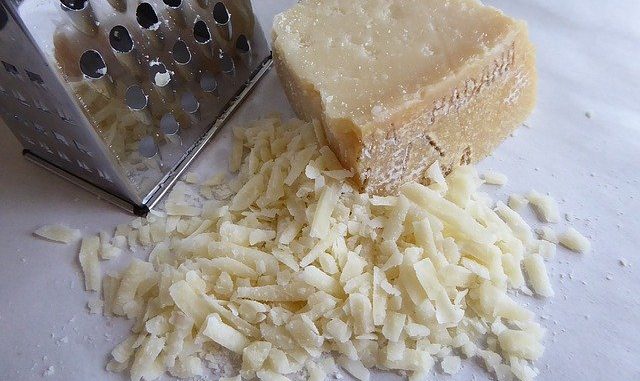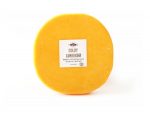
Cheese powders are dehydrated forms of cheese, widely used in the food industry for their convenience, long shelf life, and ease of incorporation into various products. These powders capture the essence of cheese flavour and are used in snacks, sauces, seasonings, and ready-to-eat meals. We have often used them in product development to reduce the reliance on cheese that may not be available in the supply chain.
Formulations
- Cheese Types: Cheese powders can be made from a variety of cheeses, including cheddar, mozzarella, parmesan, and blue cheese. The choice of cheese affects the flavour, color, and application of the powder.
- Ingredients: Typical formulations include natural cheese, milk solids, whey, emulsifying salts, anti-caking agents, and flavour enhancers.
- Cheese: Provides the primary flavour and fat content.
- Milk Solids and Whey: Add bulk and improve texture.
- Emulsifying Salts: Help disperse the fat evenly throughout the powder.
- Anti-Caking Agents: Prevent clumping and ensure free-flowing properties.
- flavour Enhancers: Boost the intensity of the cheese flavour.
Manufacture
The production of cheese powder involves several steps:
- Selection and Preparation: High-quality cheese is selected and cut into small pieces.
- Melting and Blending: The cheese is melted and blended with other ingredients, such as milk solids and emulsifying salts, to form a homogeneous mixture. This step is crucial for achieving the desired flavour and texture.
- Spray Drying: The cheese mixture is then fed into a spray dryer. Here, it is atomized into fine droplets and exposed to hot air, which rapidly evaporates the moisture, leaving behind fine cheese powder.
- Cooling and Sieving: The powder is cooled and passed through sieves to remove any large particles or clumps.
- Packaging: The final product is packed into containers, typically in a controlled environment to prevent moisture uptake and ensure product stability.
Issues in Manufacturing and Packaging
- Hygroscopicity: Cheese powder tends to absorb moisture from the environment, leading to clumping and spoilage. It is essential to control humidity during processing and packaging.
- Oxidation: The fats in cheese powder are prone to oxidation, which can lead to rancidity and off-flavours. Using antioxidants and packing in oxygen-barrier materials can mitigate this issue.
- Flavour Stability: Maintaining the authentic cheese flavuor over time is challenging. The formulation must include stabilizers that preserve the flavour.
- Consistency: Achieving a consistent particle size is crucial for uniform mixing in end products. Sieving and proper spray drying techniques help maintain consistency.
- Powder Flow: Anti-caking agents are necessary to ensure the powder remains free-flowing, which is essential for ease of use in food processing and packaging.
Issues When Filling Packaging
- Powder Flowability: Ensuring the powder flows smoothly during filling is critical. This requires precise control over particle size and the use of anti-caking agents. Inadequate flowability can lead to blockages and uneven filling.
- Dust Generation: Cheese powder is prone to creating dust during filling, which can pose health risks to workers and contaminate the environment. Implementing dust extraction systems and using enclosed filling systems can mitigate this issue.
- Static Electricity: The fine particles of cheese powder can accumulate static electricity, causing them to cling to surfaces and leading to uneven filling and wastage. Anti-static measures, such as grounding equipment, can help reduce static build up.
- Moisture Control: Exposure to moisture during packaging can cause the powder to clump and degrade in quality. Maintaining a low-humidity environment and using moisture-resistant packaging materials are crucial.
- Oxygen Sensitivity: Cheese powder is sensitive to oxygen, which can lead to oxidation and rancidity. Using inert gas flushing (such as nitrogen) during packaging and oxygen-barrier materials helps preserve the quality.
- Packaging Material: Choosing the right packaging material is vital. It should provide a barrier against moisture, oxygen, and light while also being durable enough to protect the powder during transportation and storage.
- Filling Accuracy: Accurate filling is essential to ensure the right quantity of powder is packed. Automated filling machines with precise control systems can achieve this, reducing wastage and ensuring consistent product quality.
- Heat Sensitivity: Cheese powder can be sensitive to heat, which may cause it to melt or degrade. The packaging process should avoid excessive heat exposure, and temperature-controlled environments should be maintained.
- Sealing: Proper sealing of packages is essential to prevent moisture and oxygen ingress. Heat sealing, adhesive sealing, or zipper seals can be used depending on the packaging material and design.
- Shelf Life: Ensuring a long shelf life requires considering all the above factors. Using high-quality packaging materials, maintaining appropriate storage conditions, and including antioxidants in the formulation can help extend the shelf life of cheese powder.
Quality Control
- Microbial Testing: Regular microbial testing ensures the powder is free from harmful bacteria, yeast, and molds.
- Moisture Content: Monitoring moisture levels is crucial to prevent clumping and spoilage.
- Sensory Evaluation: Regular taste and odor tests ensure the powder maintains its desired cheese flavour.
- Particle Size Analysis: Ensures uniformity and flowability of the powder.
- Chemical Analysis: Regular testing for fat content, protein levels, and potential contaminants.
Applications
- Snacks: Used as a seasoning for popcorn, chips, and crackers.
- Sauces and Dressings: Provides cheese flavour in instant sauces, dips, and salad dressings.
- Bakery Products: Adds flavour to bread, muffins, and savoury pastries.
- Ready-to-Eat Meals: Used in pasta, rice dishes, and other ready-to-eat meals for added cheese flavour.
- Convenience Foods: Incorporated into powdered soups, instant noodles, and other convenience foods.
Cheese powders offer a versatile and convenient way to impart cheese flavour in various food products. The formulation, manufacturing, and packaging processes are intricate, requiring careful attention to detail to ensure quality and stability. By addressing the challenges associated with hygroscopicity, oxidation, flavour stability, and packaging, manufacturers can produce high-quality cheese powders that meet consumer expectations. Proper quality control measures and innovative packaging solutions play crucial roles in maintaining the integrity and extending the shelf life of cheese powders, making them an indispensable ingredient in the modern food industry.

Leave a Reply